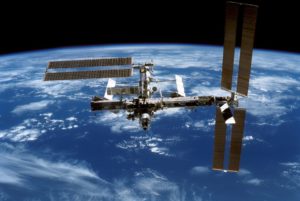 The United States and Russia are teaming up to build a new space station near the moon, as a stopping point for a variety of potential missions.
The United States and Russia are teaming up to build a new space station near the moon, as a stopping point for a variety of potential missions.
NASA and its Russian counterpart, Roscosmos, made the announcement at the International Aeronautics Congress in Adelaide, Australia. Canada, Japan and the European Space Agency—all of the powers currently involved in the International Space Station—have also expressed interest in joining the project.
Construction of the station is tied around the Space Launch System and Orion capsule, next generation systems that NASA already has in the works. Their first unmanned flight is planned for 2018, with a manned launch in 2023. The process of moving station parts for construction in space will then occur until 2026.
The potential space station is being described as a “Deep Space Gateway,” a sort of waypoint for trips throughout the solar system. Its location near the moon could be helpful to Russia, which wants to send people there by 2029 and eventually begin colonization. NASA, meanwhile, has its sights set on a mission to Mars sometime in the coming decades. There are also private companies interested in both endeavors.
This new space station will likely be the eventual replacement of the International Space Station, pieces of which have been orbiting since 1998 and which has been inhabited by a rotating crew since 2000. Though its mission has been officially extended to 2024, and may be able to keep going until 2028, the powers that be are likely worrying about how long the aging vessel can realistically remain viable.
One thing of note is that this new space station will be located closer to the moon, and thus much farther out from Earth. This location not only proves useful as a stopping point between space missions, but also means that experiments can be conducted without having to account for Earth’s magnetic field, and where the higher levels of cosmic radiation are factors. This will be a good process for testing how a real deep space mission would need to work.
As for who might build the project, NASA has already selected six companies to build prototype habitats for exploring deep space—Bigelow Aerospace, Boeing, Orbital ATK, Sierra Nevada Corporation’s Space Systems, NanoRacks and Lockheed Martin. The latter has specifically announced recently that it plans to build a lunar lander, which presumably ties into the Deep Space Gateway.





